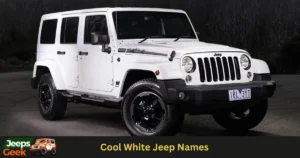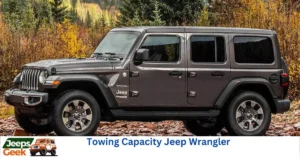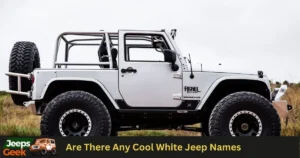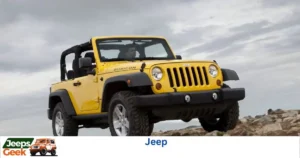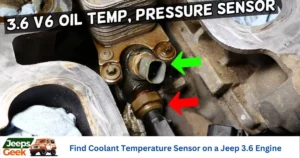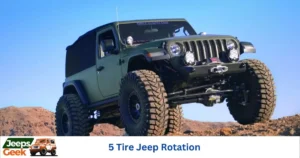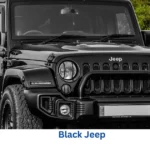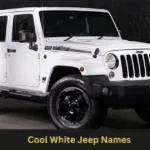The Jeep Wrangler stands out as one of the most incredible rides globally, promising fantastic drives on and off the road without breaking the bank on upkeep. With various models available, each packed with excellent features, the Jeep Wrangler lineup is a force to be reckoned with.
However, it’s important to note that some Jeep Wranglers have earned a bad reputation over the years. Among them, the 2012 model takes the lead, causing frustration with its persistent issues. But don’t let this discourage you; there are more years to consider beyond this setback.
If you’re eyeing a Jeep Wrangler, it’s wise to be well-informed about the worst Jeep Wrangler years that you should steer clear of. This insight ensures you make a smart choice. Let’s delve into the details of these models, understand why they should be avoided, and explore some fantastic alternatives that won’t let you down.
Top 5 Jeep Wrangler Years To Avoid At All Costs
Here’s a simple breakdown of the Jeep Wranglers you might want to steer clear of and the ones that make for great used buys:
| Years To Avoid (3rd Generation) | Best Years (2nd, 3rd, and 4th Generation) |
| 2007 | 1997 |
| 2008 | 2003 |
| 2012 | 2010 |
| 2013 | 2011 |
| 2014 | 2018 |
Now, let’s dig into why these years are either a cautionary tale or a green light when considering a used Jeep Wrangler.
2007 Jeep Wrangler
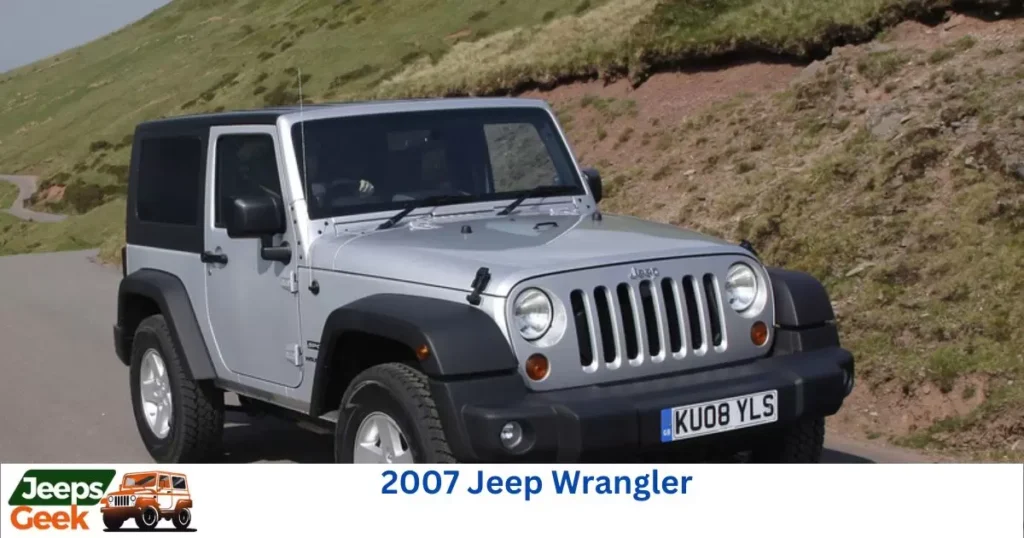
The 2007 Jeep Wrangler takes the spotlight as the least favorable year, plagued by various significant problems, especially when it comes to off-road adventures. While it holds up decently on the paved roads, it tends to let users down when the terrain gets tough.
Drivers faced a slew of issues, ranging from engine problems and fuel system glitches to complications with the braking and steering systems. Let’s quickly explore the major headaches that users encountered with the 2007 Jeep Wranglers.
Engine Failure
In 2007, Jeepers were the first to sound the alarm on the Jeep’s engine system going haywire. They reported that the engine had a tendency to burn oil, develop leaks, experience failures, or produce unsettling knocking noises while on the road. Distressingly, owners found themselves needing to swap out the engine at a mere 40,000 miles.
Dreaded Death Wobble
Jeep Wrangler users have voiced their frustration, citing the notorious death wobble as a major headache. this unsettling phenomenon starts causing shuddering and shaking when the odometer hits around 50,000 miles. Dealing with this issue doesn’t come cheap, as users find themselves shelling out approximately $880 for repairs to tame the dreaded death wobble.
Steering & airbag issues
Users on the National Highway Traffic Safety Administration’s (NHTSA) website have flagged numerous steering issues with the Jeep Wrangler. A staggering 10 recalls have been issued for this model, with the airbag problem standing out as a significant recall. The steering-related concerns reported by users add to the list of challenges associated with the Jeep Wrangler.
TIPM failing
Users have also brought attention to TIPM (Totally Integrated Power Module) failures while driving, causing engine stalls and triggering electrical problems. In such cases, replacing the TIPM emerges as the go-to solution to address these issues. The reported instances of TIPM failure add another layer of concern for Jeep Wrangler owners.
2008 Jeep Wrangler
The 2008 Jeep Wrangler stands out as a solid choice for off-road enthusiasts, delivering an impressive off-road driving experience. However, it’s not all smooth sailing, as there are persistent issues plaguing various components of the vehicle. While there may be fewer recalls compared to the 2007 model, owners have encountered thousands of problems within the system. Let’s delve into the key concerns that make navigating the 2008 Jeep Wrangler ownership experience a bit bumpy.
Airbags Issues
In contrast to 2007, the 2008 Jeep Wrangler faced a significant issue with the airbag, often being reported as deploying hardly or, at times, not deploying at all. This poses a serious safety concern for users, who then find themselves dealing with an additional cost for airbag replacement. The compromised airbag performance in the 2008 model becomes a notable drawback for users concerned about their safety on the road.
Electrical Problem
Owners sometimes encounter issues where the horn and headlights of the 2008 Jeep Wrangler function randomly and inconsistently. In addition to this, there are instances where the engine stalls even when the ignition key is in the ON position. These irregularities can be frustrating for owners, creating an unpredictable experience with essential vehicle functions.
Death Wobble
As per CarComplaints.com, the 2008 Jeep Wrangler is plagued by a severe case of the death wobble, causing substantial issues for users. Many have to shell out approximately $800 for repairs to address this problem. The prevalence of the death wobble in the 2008 model adds to the list of challenges reported by users.
Quality of the interior materials
Users express dissatisfaction with the subpar quality of the Jeep Wrangler’s interior. Some notable issues include the absence of a backseat, air conditioning, and power steering, despite being standard features in most vehicles. The National Highway Traffic Safety Administration (NHTSA) has also reported problems with the fuel system, contributing to excessive engine oil consumption. These combined concerns paint a picture of an interior that falls short of user expectations in terms of both comfort and functionality.
Read also: How To Calibrate Blend Door Actuator On Jeep Wrangler?
2012 Jeep Wrangler
The 2012 Jeep Wrangler holds the unfortunate title of being the worst-rated model among all the years. Owners have reported numerous problems, echoing issues seen in older models. This includes concerns with the airbags, fuel system, shift gearing, and poor visibility. But the list doesn’t stop there. Let’s delve into the key reasons why steering clear of the 2012 model is strongly advised.
Failed TIPM
Differing from the 2007 and 2008 models, users of the 2012 Jeep Wrangler have faced TIPM (Totally Integrated Power Module) failures due to electrical problems. Addressing this issue requires a repair cost of approximately $1,300. This electrical glitch adds to the concerns reported by users of the 2012 model, making it a noteworthy aspect to consider when evaluating this particular year.
Faulty Engine System
Owners have highlighted substantial issues with the engine system in the 2012 Jeep Wrangler, reporting problems such as misfiring, leaks, overheating, rattling noises, and, in some cases, complete engine failure.
Adding to the list of concerns, the oil pan on the transmission is prone to corrosion, often caused by leakage from the air conditioning system. These engine-related troubles contribute to the overall challenges reported by owners of the 2012 model.
Other Electrical Glitch
The 2012 Jeep Wrangler has been subject to recalls due to major defects in internal components, including the Jeep’s AC/heater core, blend door actuator, radiator, and more. These recalls highlight significant issues within the vehicle’s essential systems, urging attention to rectify potential problems with these components.
2013 Jeep Wrangler
In the lineup of third-generation Jeep Wranglers, the 2013 model follows in the footsteps of the problematic 2012 version, earning its place as another challenging year. This model disappoints not only by lacking standard functions but also due to several defects, making it an overall frustrating choice. Let’s explore the key issues that contribute to the disappointment surrounding the 2013 Jeep Wrangler.
Faulty fuel tank
The 2013 model is riddled with faults in various parts, with a particular focus on the fuel tank. Owners have reported issues ranging from misfiring cylinders in the engine to problems with gear shifting. The latter often requires owners to replace the failed gear, incurring a cost of approximately $600. These multiple concerns in crucial components contribute to the challenging experience reported by owners of the 2013 Jeep Wrangler.
Water pump, TIPM, and Death Wobble failures
The 2013 model of the Jeep Wrangler faces another significant issue with the failure of the water pump, causing the engine to overheat. This adds to the list of problems reported by owners.
Furthermore, users have noted the incapacity of the TIPM (Totally Integrated Power Module) and the occurrence of the notorious Death Wobble, making the driving experience less than ideal. Additionally, the company has seen a considerable number of recalls on its vehicles, with the airbag problem being a major concern. These combined issues make the 2013 Jeep Wrangler a model with multiple challenges and reliability issues.
2014 Jeep Wrangler
Similar to the 2012 and 2013 models, the 2014 Jeep Wrangler is labeled as one of the worst years for this iconic vehicle. Every source points to a multitude of serious issues, with some even deeming them more severe compared to the problems seen in other years. The 2014 model seems to continue the trend of significant challenges and concerns within the Jeep Wrangler lineup.
Leaking issues
Similar to the 2012 and 2013 models, the 2014 Jeep Wrangler is labeled as one of the worst years for this iconic vehicle. Every source points to a multitude of serious issues, with some even deeming them more severe compared to the problems seen in other years. The 2014 model seems to continue the trend of significant challenges and concerns within the Jeep Wrangler lineup.All the complaints gathered from official and unofficial forums primarily revolve around oil leaking through the engine in the 2014 Jeep Wrangler. Although addressed through recalls, it’s important to note that this isn’t the final recall. The most significant recall for this model pertains to airbag issues, emphasizing ongoing concerns that have affected the 2014 Jeep Wrangler.
Safety Problem
The 2014 model has been marked by several instances of safety problems, with notable cases of brake failure or the brakes failing to lock up. This is a prevalent scenario reported by users, underscoring safety concerns associated with the 2014 Jeep Wrangler.
Miscellaneous problems
Adding to the array of issues, users of the 2014 Jeep Wrangler have faced challenges such as water leakage from the roof, particularly when the vehicle is parked. Additionally, several owners have reported instances where the hood became unlatched while driving, contributing to the list of concerns associated with the 2014 model.
What Makes A Jeep Wrangler One To Avoid? [6 Top Reported Issues To Know!]
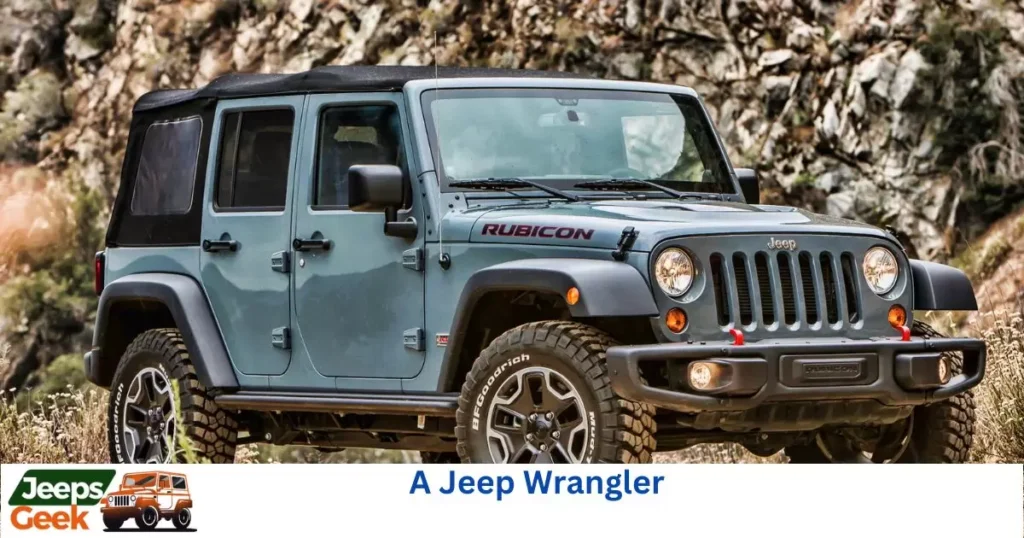
Certainly, let’s delve into some potential issues that have been identified in several generations of the Jeep Wrangler, contributing to a diminished efficiency and making it a less favorable option for use.
Oil leaking
One of the most widespread issues users face with the Jeep Wrangler is oil leaking between the engine and transmission. Given the complex composition of the Jeep with numerous parts, many are susceptible to leaks.
This poses a challenge as the leaked oil combines with the fluid used in the Jeep, leading to additional complications. Notably, the engine oil tends to change color to brown or black, and owners may also encounter an unpleasant odor as a result of these issues.
Transmission problems
The worst years of the Jeep Wrangler have seen a plethora of transmission issues, ranging from unusual noises and bad odors to erratic gear shifting. These problems have been so severe in some instances that they have necessitated recalls to address the transmission-related concerns.
Axle problems
At times, owners have to grapple with axle problems caused by lower arm control. This recall issue heightens the likelihood of a collision, underscoring the importance of addressing these concerns promptly.
Draining battery
Most of the worst Jeep models exhibit severe battery drainage issues. When the battery is discharged, the ignition system struggles to operate efficiently. Importantly, this results in many components being unable to receive the necessary electricity, causing widespread operational challenges.
Airbag problem
In the worst year of the Jeep Wrangler, owners reported significant issues with the airbag’s circuits, stemming from excess dust inside the clock spring. This situation can result in the airbag not deploying during an accident, posing a substantial risk of injury in a collision.
Faulty On-road or off-road capabilities
This issue is most common with earlier models and is hardly prevalent in modern variants. Many off-roaders have reported that Jeeps get stuck when driving on loose terrain. Additionally, they experience popped or damaged tires, undercarriage issues, misalignment due to uneven terrain, body damage, and so on.
Electrical Problems
Some Jeep Wrangler models have been reported to have electrical issues, including problems with the wiring harness, sensors, or electrical components. These issues can lead to various malfunctions and difficulties in diagnosing and repairing electrical problems.Electrical Problems: Some Jeep Wrangler models have been reported to have electrical issues, including problems with the wiring harness, sensors, or electrical components. These issues can lead to various malfunctions and difficulties in diagnosing and repairing electrical problems.
Cooling System Problems
Certain Jeep Wrangler models may encounter cooling system issues, such as radiator leaks or failures. Problems with the cooling system can result in engine overheating, potentially leading to more severe engine issues if not addressed promptly.
Soft Top Vulnerabilities
The soft tops on Jeep Wranglers, particularly in older models, can be prone to wear and tear. Users have reported issues such as leaks during rain, difficulty in folding or unfolding the soft top, and general vulnerability to damage over time.
Rust and Corrosion
Rust and corrosion can be a concern, especially in regions with harsh weather conditions. Owners have reported issues with rust forming on the undercarriage, frame, and other metal components, potentially compromising the vehicle’s structural integrity.
It’s essential to note that while these issues have been reported by some Jeep Wrangler owners, not all vehicles may experience these problems, and regular maintenance can help mitigate potential issues.
Cooling System Problems
Certain Jeep Wrangler models may encounter cooling system issues, such as radiator leaks or failures. Problems with the cooling system can result in engine overheating, potentially leading to more severe engine issues if not addressed promptly.
Soft Top Vulnerabilities
The soft tops on Jeep Wranglers, particularly in older models, can be prone to wear and tear. Users have reported issues such as leaks during rain, difficulty in folding or unfolding the soft top, and general vulnerability to damage over time.
Rust and Corrosion
Rust and corrosion can be a concern, especially in regions with harsh weather conditions. Owners have reported issues with rust forming on the undercarriage, frame, and other metal components, potentially compromising the vehicle’s structural integrity.
It’s essential to note that while these issues have been reported by some Jeep Wrangler owners, not all vehicles may experience these problems, and regular maintenance can help mitigate potential issues.
The Best Years of the Jeep Wrangler
Apart from the worst Jeep Wranglers, there are plenty of Jeep models that have proved blissful years in history. Have a short glimpse at all of them:
1997 Jeep Wrangler
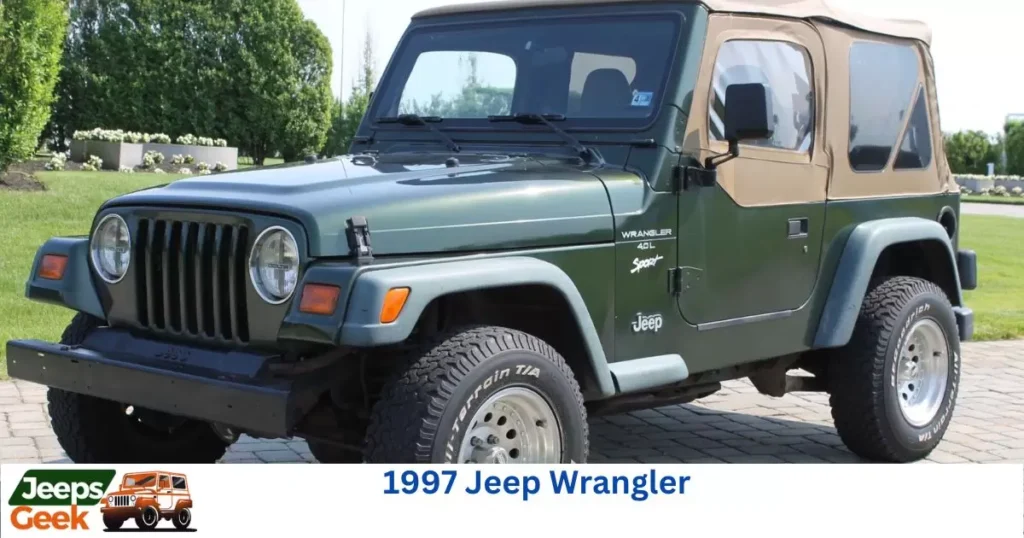
The 1997 Jeep Wrangler stands out as a remarkable piece with a host of advanced features, making it an incredible choice for both on and off-roading enthusiasts. Loaded with character and innovation, this model introduces enhanced features such as an improved braking system and dual airbags, elevating safety standards. Additionally, updated safety systems further contribute to the overall appeal of the 1997 Jeep Wrangler, marking it as a notable and well-equipped vehicle for its time.
2003 Jeep Wrangler
The 2003 Jeep Wrangler takes its place as the most upgraded version from the company, showcasing significant improvements. It boasts a robust off-road suspension and a powerful six-cylinder engine that enhances its overall performance. Notably, the inclusion of a four-speed automatic transmission addresses the drawbacks of the outdated three-speed automatic, leading to improved fuel efficiency in this model. The 2003 Jeep Wrangler stands as a testament to the company’s commitment to enhancing both off-road capabilities and on-road efficiency.
2010 Jeep Wrangler
While many models of the 3rd generation faced challenges, the 2010 Jeep Wrangler emerges as a blissful exception. Boasting a more dependable drivetrain and an advanced engine system, it stands out for its improved reliability. The 2010 model also comes equipped with additional standard features, including a quick removable soft top, fog lamps, enhanced stability control, tow hooks, and a compass system. This iteration of the Jeep Wrangler brings a positive and upgraded experience to the world, showcasing advancements in both performance and features.
2011 Jeep Wrangler
Unlike in 2010, the company unveiled another advanced Jeep Wrangler in 2011. Astonishing the world with features like standard four-wheel drive, a V-6 engine, a removable hardtop, soft top, rugged styling, a quick-washable interior, and more, the 2011 Jeep Wrangler showcased a blend of performance, versatility, and rugged design. This model continued the legacy of the Wrangler, providing enthusiasts with a well-equipped and capable off-road vehicle.
2018 Jeep Wrangler
Thanks to enhanced on-off roading capabilities compared to its predecessors, 2018 stands out as one of the best years for the Jeep Wrangler. The Jeep variants in this year offer extensive customization options, meticulously maintained rugged characteristics, and an astonishing build design. These features collectively contribute to a modernized feel, making the 2018 Jeep Wrangler a standout choice for enthusiasts seeking both performance and a contemporary driving experience.
Important Expert Tips
- Research Before Buying: Before purchasing a used Jeep Wrangler, especially from the listed years to avoid, conduct thorough research on the specific model year, common issues, and potential recalls. Knowledge is key to making an informed decision.
- Pre-Purchase Inspection: Consider getting a pre-purchase inspection from a qualified mechanic. They can assess the overall condition of the Jeep, check for any existing issues, and provide an estimate of potential repair costs.
- Avoid Problematic Years: Steering clear of the listed problematic years, especially 2007, 2008, 2012, 2013, and 2014, can save you from potential headaches associated with major mechanical and safety issues.
- Check Recall Status: Verify the recall status of the Jeep you’re interested in. Manufacturers often issue recalls to address safety and performance concerns. Ensuring that all recalls have been addressed will contribute to a safer driving experience.
- Consider Later Models: The article highlights some better years for the Jeep Wrangler, such as 2010, 2011, and 2018. If possible, consider opting for these years as they are reported to have fewer issues and improved features.
- Understand Potential Costs: Be prepared for potential repair costs associated with known issues. For example, if purchasing a 2007 model, anticipate potential engine and steering-related expenses. Budgeting for these costs can prevent financial surprises down the road.
Expert Tips
- Evaluate Off-Road Needs: If you plan on using the Jeep for off-road adventures, consider the reported issues related to off-road driving, such as the “death wobble.” Assess whether the model you’re interested in meets your specific needs.
- Look for Well-Maintained Examples: A well-maintained Jeep with service records and evidence of regular maintenance is likely to be in better condition. It’s a good sign that the owner has taken care of the vehicle properly.
- Test Drive: Always take the Jeep for a test drive. Pay attention to any unusual noises, vibrations, or handling issues. A test drive can reveal potential problems that may not be apparent through visual inspection alone.
- Consider Extended Warranty: If purchasing a used Jeep Wrangler with a history of issues, consider investing in an extended warranty. This can provide added peace of mind and financial protection against unexpected repairs.
Remember, each used vehicle is unique, and individual maintenance history plays a significant role in its condition. These tips can help guide your decision-making process and increase the likelihood of a positive ownership experience.
Pros and Cons
| Jeep Wrangler Model Year | Pros | Cons |
| 2007 | – Decent performance on paved roads | – Engine failure issues, including oil burning and leaks |
| – Off-road capability compromised | – Dreaded “Death Wobble” issues around 50,000 miles | |
| – Available features and options | – Numerous steering and airbag-related recalls, TIPM failures | |
| 2008 | – Impressive off-road experience | – Airbag deployment issues, compromising safety |
| – Varied features for off-road enthusiasts | – Electrical problems, irregularities in horn and headlights, death wobble issues | |
| – Interior quality concerns, including missing standard features like backseat and air conditioning | ||
| 2012 | – Off-road capabilities compromised | – TIPM failures leading to electrical problems, requiring expensive repairs |
| – Various reported issues with the engine system | – Engine system problems, misfiring, leaks, and potential overheating | |
| – Considerable number of recalls | – Recalls for AC/heater core, blend door actuator, radiator, and more | |
| 2013 | – Notable improvements in features like a quick removable top | – Faulty fuel tank leading to engine misfires, gear shifting issues |
| – V-6 engine, removable hardtop, and rugged design | – Water pump, TIPM, and Death Wobble failures, numerous recalls including airbag issues | |
| 2014 | – Improved on-off roading capabilities compared to predecessors | – Oil leaking issues, safety problems like brake failures, hood unlatching, and water leakage |
| – Extensive customization options | – Miscellaneous problems, including difficulty folding/unfolding the soft top and rust issues | |
| Best Years (e.g., 2010, 2011, 2018) | – Improved reliability, drivetrain, and engine systems | – Potential repair costs associated with known issues |
| – Additional standard features like quick removable soft top, fog lamps, stability control, tow hooks, compass system | – Varied reported issues, but generally fewer and less severe compared to the worst years |
Please note that the information provided is based on reported issues and concerns, and individual experiences may vary. Additionally, the pros and cons are summarized for the purpose of this table and may not encompass all aspects of each model year.
People also ask
What year is the most reliable Jeep Wrangler?
The reliability of Jeep Wranglers varies, but many consider the 2015 Jeep Wrangler as one of the most dependable model years. Its straightforward design and solid performance make it a popular choice.
What year Jeeps have the least problems?
In terms of minimal issues, the 2016 Jeep Wrangler is often praised for having fewer problems. It strikes a good balance between modern features and a robust design, contributing to its reputation for reliability.
What is the best year Jeep to buy used?
For a well-regarded used option, the 2017 Jeep Wrangler is often recommended. It combines a durable build with updated technology, making it a solid choice for those seeking a reliable and modern used Jeep.
What is the best Jeep Wrangler model to buy?
The Jeep Wrangler Rubicon is often considered the best model for off-road enthusiasts, offering enhanced capabilities with features like lockable differentials and a disconnecting sway bar. Choose this model for serious off-road adventures.
Conclusion
In conclusion, the article provides a comprehensive overview of the Jeep Wrangler, highlighting specific model years potential buyers should avoid due reported issues and challenges. Years 2007, 2008, 2012, 2013, 2014 identified problematic issues ranging engine failures, steering problems electrical glitches notorious “Death Wobble.” Article emphasizes importance thorough research, pre-purchase inspections, consideration later models fewer reported problems.
On positive side, article identifies several model years, 1997, 2003, 2010, 2011, 2018, best options Jeep Wrangler enthusiasts. These years praised improved reliability, drivetrain, features, making them favorable choices potential buyers. Pros cons table further breaks down specific strengths weaknesses highlighted problematic years recommended best years. Overall, article serves valuable guide individuals considering used Jeep Wrangler purchase, offering insights help make informed decisions avoid potential pitfalls.

Meet James Wilson, the driving force behind “Jeeps Geek.” As a dedicated Jeep enthusiast, I’ve navigated the trails, tinkered under the hood, and conquered every off-road challenge. Join me on the Jeeping journey where I share insights, troubleshoot issues, and celebrate the thrill of the open road.





